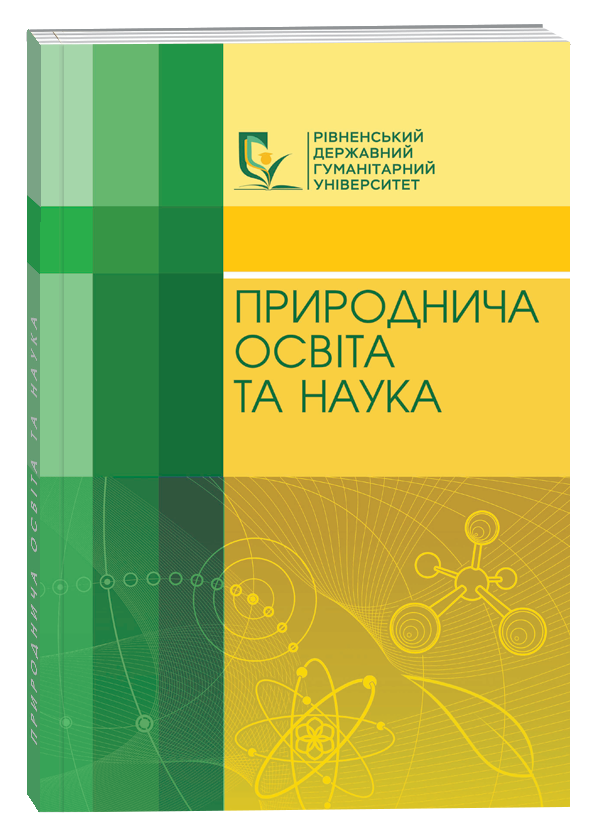PHOTOSYNTHETIC PIGMENTS OF CICER ARIETINUM L. LEAVES OF THE VARIETY BUDZHAK UNDER SEED INOCULATION WITH MICROBIAL PREPARATIONS
Abstract
The article presents the results of a field experiment to study the effect of liquid forms of bacterial suspension of the selected strain of Mesorhizobium ciceri ND-64 (BS) and Rhyzohumin (seed treatment before sowing according to the manufacturer's standards) on the content of chlorophylls a, b, their sum, carotenoids and pigments ratio in the leaves of Cicer arietinum L. variety Budzak. The determination of photosynthetic pigments has been carried out in selected samples of leaves from the middle layer of chickpea plants by the method of their extagination with dimethyl sulfoxide, according to Welbourne, using the UIT SFU-0172 spectrophotometer. The number of photosynthetic pigments in the leaves has been found to depend on the phase of individual development of Cicer arietinum and the pre-sowing treatment of seeds with microbial preparations. The peak accumulation of chlorophylls a and b and their sum has been detected in the green bean phase, and carotenoids` peek has been detected during flowering. Both bacterial preparations contributed to the accumulation of chlorophylls in the leaves of chickpea. The complex microbial preparation Rhizogumin has increased the content of chlorophylls a, b, their sum, and carotenoids by 8.1–31.3%, 10.8–26.9%, 11.2–27.9%, and 2.3–9.7% on average in the phases of growth and development. A statistically significant difference in the ratio of chloroplast pigments chlorophyll a/chlorophyll b in the leaves has been determined in the phases of flowering, end of flowering – beginning of bean formation, and beginning of bean ripening under the influence of BS and Rhizogumin. Seed treatment with Rhizogumin has significantly increased the ratio of the sum of chlorophylls (a+b) / carotenoids at the beginning of bean ripening, BS – in the flowering and end of flowering – beginning of bean formation phases.
References
2. Гавій В. М., Кучменко О. Б., Терещенко О. О. Вплив біопрепарату Поліміксобактерин та імунопротектора BAI-SI на вміст фотосинтетичних пігментів і урожайність кукурудзи. Збірник наукових праць УНУС. 2019. 95 (1). С. 65–75.
3. Гуляєв Б. І. Екофізіологія фотосинтезу: досягнення, стан та перспективи досліджень. Фізіологія рослин в Україні на межі тисячоліття : зб. наук. праць. Київ, 2001. Т. 1. С. 60–74.
4. Карпенко В. П., Коробко О. О. Вплив гербіциду і біологічних препаратів на фотосинтетичну продуктивність і врожайність нуту. Вісник аграрної науки Причорномор’я. 2018. Вип. 4. С. 48–54.
5. Карпенко В. П., Притуляк Р. М. Фізіологічні зміни у рослинах ячменю ярого за дії біологічно активних речовин. Вісник Уманського НУС. 2014. № 1. С. 60–65.
6. Козак В. О., Пида С. В. Продуктивність сочевичі харчової (Lens culinaris Medik.) за впливу мікробних препаратів та фунгіцидів. Фізіологія рослин і генетика. 2024. Т. 56. № 1. C. 27‒42. DOI: https://doi.org/10.15407/frg2024.01.027.
7. Колесніков М. О., Кадиров Т. Р. Рекомендації по вирощуванню нуту в умовах півдня України. Мелітополь : ТДАТУ. 2022. 44 с.
8. Лихочвор В. В., Пущак В. І. Вплив норм висіву та інтенсифікації технології на формування урожайності сортів нуту. Вісник аграрної науки Причорномор’я. 2021. Вип. 4. URL: https://dspace.mnau.edu.ua/jspui/bitstream/123456789/4428/1/n97v1r2018lykhochvor.pdf.
9. Метеликові боби (Vigna aconitifolia): якісні характеристики та технологія білкового ізоляту / Головко Т. М. та ін. Вісник Сумського національного аграрного університету. Серія «Механізація та автоматизація виробничих процесів». Вип. 2 (52). 2023. С. 21‒27. DOI: https://doi.org/10.32782/msnau.2023.2.4.
10. Пида С. В., Чернік І. В.,. Тригуба О. В. Динаміка вмісту фотосинтетичних пігментів у листках Cicer arietinum L. за впливу бактеріальних препаратів. Український журнал природничих наук. № 9. 2024. С. 46‒55. DOI: https://doi.org/10.32782/naturaljournal.9.2024.5.
11. Тітова А. Є., Пузік В. К. Перспективи вирощування та використання нуту під час глобальних змін клімату. Вісник ХНАУ. Серія: Рослинництво, селекція і насінництво, плодоовочівництво. 2013. № 9. С. 210–214.
12. Biological activities of chickpea in human health (Cicer arietinum L.). A review / Faridy J.-C. M. et al. Plant Foods Hum Nutr. 2020. Vol. 75 (2). P. 142–153. DOI: 10.1007/s11130-020-00814-2.
13. Characterization and compositional studies of oil from seeds of desi chickpea (Cicer arietinum L.) cultivars grown in pakistan / Zia-Ul-Haq M. et al. Journal of the American Oil Chemists' Society. 2007. Vol. 84. P. 1143–1148. DOI: https://doi.org/10.1007/s11746-007-1136-3.
14. Comparison of the functional properties of pea, chickpea and lentil protein concentrates processed using ultrafiltration and isoelectric precipitation techniques / Boye J. I. et al. Food Research International. 2010. № 43. 537‒546. DOI: https://doi:10.1016/j.foodres.2009.07.021.
15. Elkoca E., Kantar F., Fikrettin S. Influence of Nitrogen Fixing and Phosphorus Solubilizing Bacteria on the Nodulation, Plant Growth, Yield of Chickpea. Journal of Plant nutrition. 2008. 31. 157–171.
16. Impact of organic and inorganic farming on soil quality and crop productivity for agricultural fields: A comparative assessment / Sahu H. et al. Environmental Challenges. Volume 15, April 2024, 100903. DOI: https://doi.org/10.1016/j.envc.2024.100903.
17. Nutritional composition, health benefits and bio-active compounds of chickpea (Cicer arietinum L.) / Begum N. et al. Front Nutr. 2023. Vol. 10.1218468. URL: https://pubmed.ncbi.nlm.nih.gov/37854353/.
18. Nutritional constituent and health benefits of chickpea (Cicer arietinum L.): A review / Wang J. et al. Food Research International. 2021. Vol. 150. Part A, 110790. DOI: https://doi.org/10.1016/j.foodres.2021.110790.\
19. Tatar O., Ozalkan C., Atasoy G. Partitioning of dry matter, proline accumulation,chlorophyll content and antioxidant activity of chickpea (Cicer arietinum L.) plants under chilling stress. Bulgarian Journal of Agricultural Science. 2013. № 19. С. 260–265.
20. Wellburn A. P. The spectral determination of chlorophyll a and b, as well as carotenoids using various solvents with spectrophotometers of different resolution. J. Plant. Physiol., 1994. Vol. 144 (3). P. 307–313.






